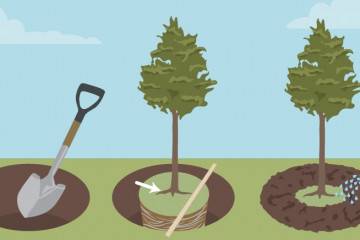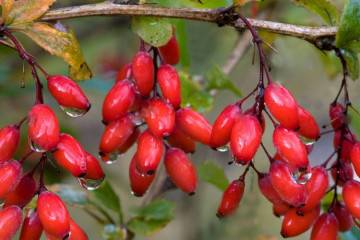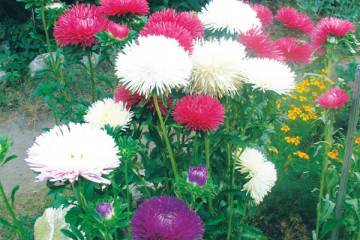Diseases of fruit trees, diseases of garden fruit trees
Content:
Almost any household plot is decorated with fruit crops, but sometimes they are subject to various diseases. In order to return the garden to bloom and get a rich harvest, it is necessary to identify the emerging diseases of garden trees in time and use the correct methods of treatment.
Diseases of fruit trees
Diseases of trees are associated with many disorders. All ailments of horticultural fruit crops can be conditionally divided into 2 groups:
- the source of which is fungi;
- caused by exposure to bacteria.
The main fungal diseases of trees
Most often, fruit trees and shrubs are attacked by pathogenic fungi. Their spores, falling under the bark of a plant, actively grow and parasitize on it.
Milky shine
This ailment is easy to identify by the silvery bloom that appears on the foliage. The spread of the fungus begins from the southern side of the crown, gradually capturing it all. Over time, the leaves dry and crumble.
Septoria (white leaf spot)
Usually pear suffers from this disease. On the leaf plates of a diseased tree, round whitish specks with a gray border appear. If nothing is done, brown dots will begin to appear on the leaves, they themselves will dry out and fall off.
Phylostictosis (brown leaf spot)
This is one of the intractable types of rust, a characteristic feature of which is the appearance of brown spots on greenery. Over time, the formations dry up, holes appear in their place. Lack of treatment leads to the weakening and death of the tree.
Pear rust
This ailment usually does not manifest itself until the fungus has firmly settled in the cells of the plant. The initial symptom of the disease is yellowish-green specks on the leaves. Infected specimens of culture lose frost resistance and die in cold weather.
Moniliosis
You can find out the pathology by spots of brown plaque with vague outlines. Young shoots and buds are infected, the fruits may have a characteristic alcohol smell.
Powdery mildew
A distinctive feature of this disease is a light dusty coating on new shoots and leaves. With the development of the fungus, the leaf plates curl, and an atypical fluff may appear on the fruits.
Apple and pear scab
The infection enters the tree through the kidneys and invades all of its aerial parts. A greenish-brown bloom helps to determine the disease, affecting first the leaves, and then the fruits.
Infected parts of the tree should be cut and burned.After that, it is necessary several times, in accordance with the instructions, to carry out the treatment with fungicides.
Major bacterial diseases of trees
The bacteria can also parasitize fruit trees. Infection occurs through damage in the bark, including when the pruning technology is violated.
Bacterial burn
You can recognize an ailment with this name by protruding drops of liquid with an unpleasant odor that is released as a result of the disease. The flowers are the first to be affected, then the turn of the leaves comes. If the plant is left untreated, the burn covers the young shoots and bark, on which a distinct maroon marble pattern appears.
Cracking bark on fruit trees: treatment
Cracking of the bark of fruit crops is a common problem. Cracks are not always a sign of an existing disease, but if nothing is done, then its appearance will not be long in coming.
Why does the bark burst on fruit trees
The bark on the trunk can crack for various reasons, but usually the damage occurs due to sudden changes in temperature or from sunburn. To protect the tree, in the spring it is necessarily covered with whitewash, and for the winter heat-loving specimens are wrapped in burlap or non-woven cloth.
Diseases of the bark of trees
But sometimes all the signs indicate that the plant has been infected with various pathogenic organisms. Among the many diseases of the upper layer of wood, several are the most common.
Black cancer
Infection with this bacterial disease occurs in the fall. As the disease spreads, small black dots are replaced by cracks in the bark, leaves fall, and even fruits mummify.
Cytosporosis
First of all, the infection affects the trunk, and then all the branches. You can recognize it by the brown-burgundy hue that the bark acquires. In this case, swelling in the form of bubbles is formed on it.
Common (European) cancer
The main symptom of this disease of fruit trees is brown dents on the trunk and branches, which have a light sheen and are gradually covered with reddish tubercles.
Seedling bacterial cancer
A distinctive feature of the disease is the growth of root tissues, on which growths appear, depriving the plant of nutrition. Over time, the infected part of the rhizome dies off and decays, provoking the appearance of other infections and attracting pests.
The disease is not treatable, but it can be stopped with treatment with copper-based drugs. Cutting off the infected parts of the tree, a part of healthy tissue (up to 10 cm) is also removed, and the cuts are immediately treated with garden varnish or special putty.
As a preventive measure, experienced gardeners regularly inspect fruit crops for cracks in the bark. The detected damage is treated with a solution of copper sulfate or Bordeaux liquid, after which it is covered with garden pitch. If the expected result has not been achieved, and the disease continues to develop, then the tree should be destroyed.
Knowing the description of the most common ailments of fruit trees, you can identify them in a timely manner and take measures. Sometimes this helps to save a tree that cannot heal on its own.



















